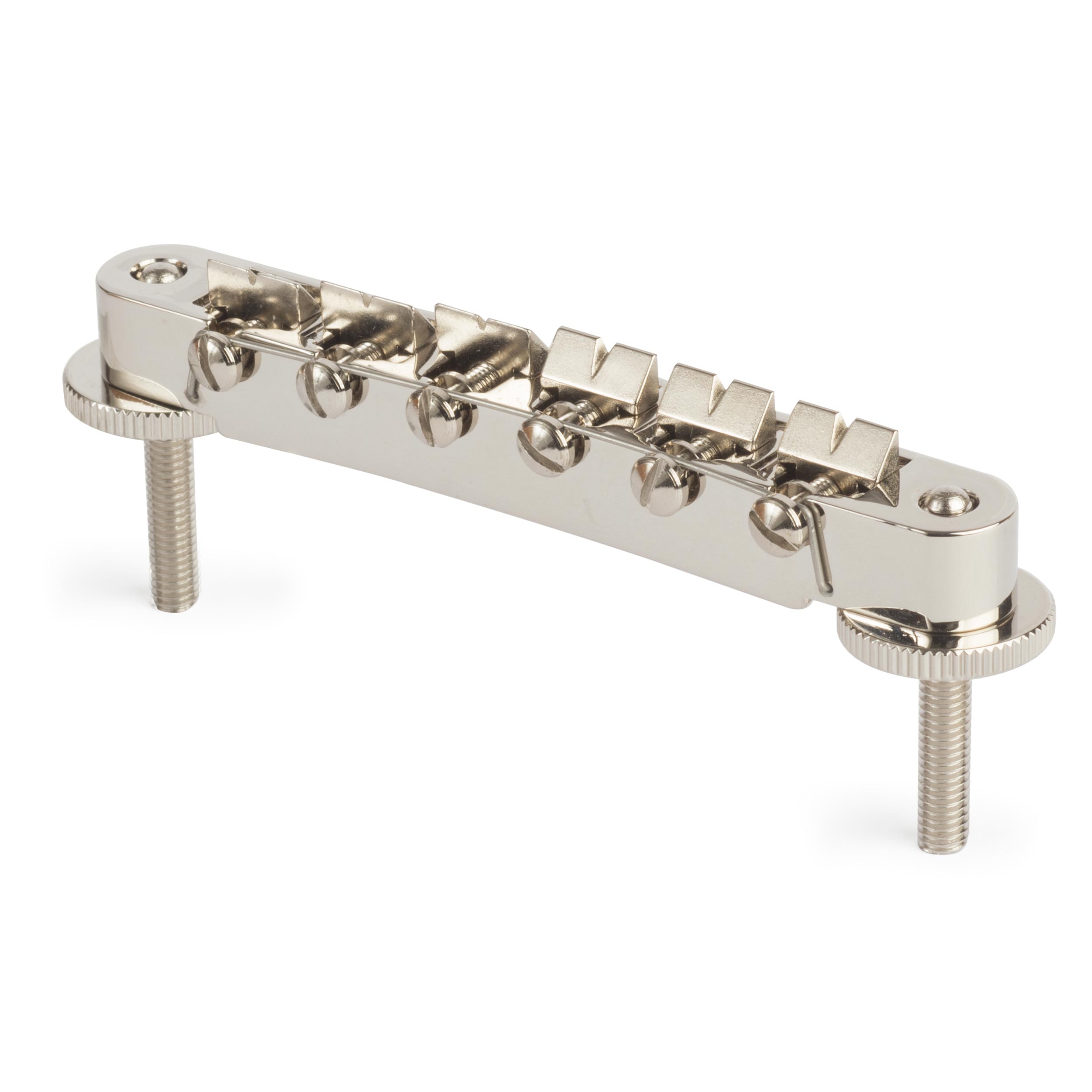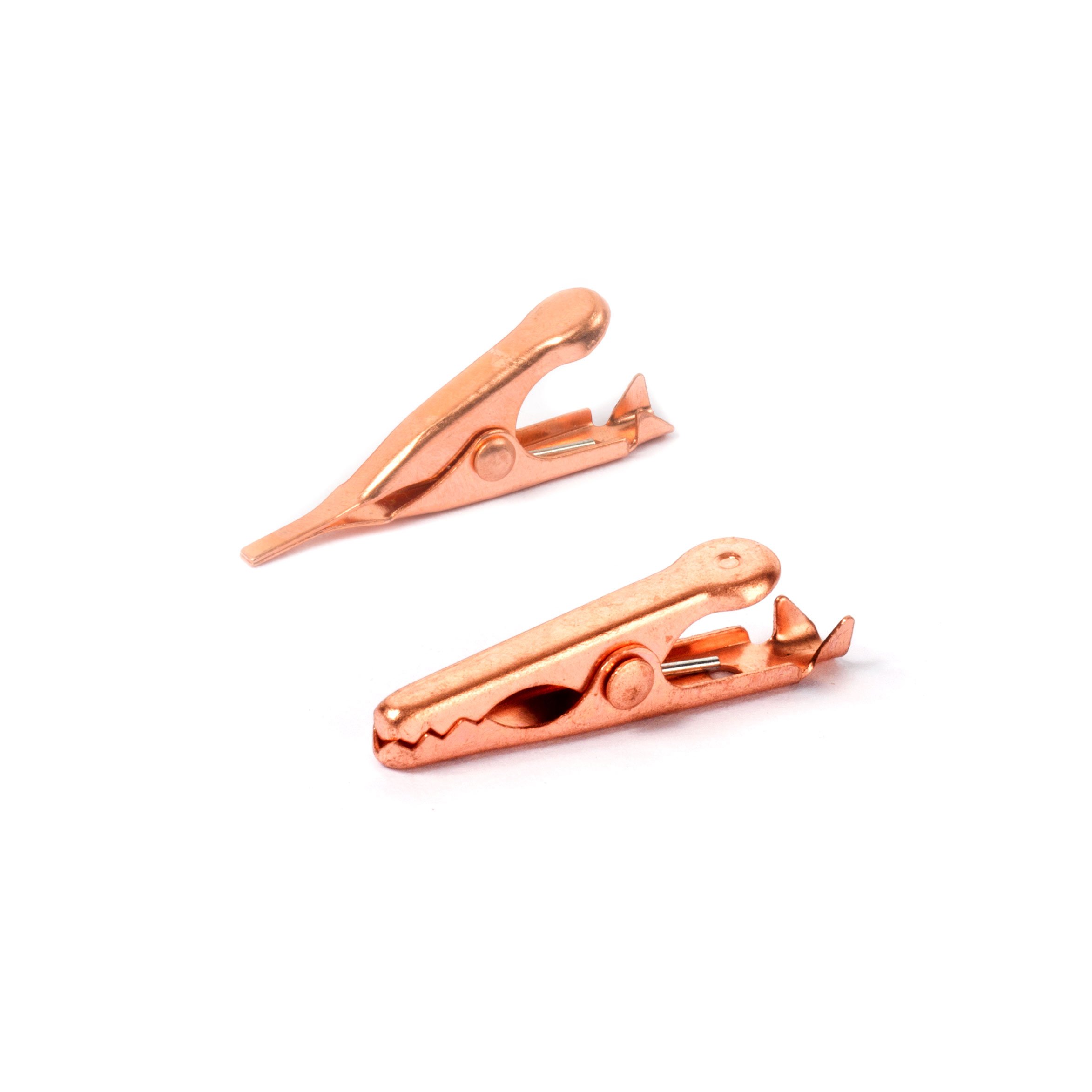Cleaning guitar parts with electrolysis
Issue 298 January 24, 2018
Brazilian luthier Rod Gomes shows Dan Erlewine a neat trick: using low-voltage electricity to clean age-old grunge from a Gibson Tune-O-Matic bridge. A couple hours in Rod’s electric soup, and the bridge is clean!
Video Transcription
[on-screen text reads: Remove rust with electricity - StewMac]
Dan Erlewine: My friend, Rod and I used electrolysis to clean guitar parts. A small electric charge [on-screen text reads: Dan Erlewine Guitar Repairman, Author] lifts rust and corrosion from metal parts in the salt water bath. We used an old 12 volt power supply. I'd say from something or else, anything would work. You need somewhere between six volts and 24 volts, and two amps or higher. And this produces gases, so you want to work in a well-ventilated area. Be careful with this one. But it's such a good tip. It's worth it. Here's my friend, Rodrigo Gomes. Rod, he's visiting me again from São Paulo, Brazil. And as always, he's brought along a killer trade secrets.
How to remove rust using electricity
Rodrigo Gomes: Yeah, Dan. I'm going to show you how to remove rust using electricity [on-screen text reads: Rodrigo Gomes Guitar Repairment].
Dan Erlewine: And the rust we're talking about is the rust and grime on this 1961 Cherry Red Dot Neck ES-335, a beauty guitar. We're down at the bridge, which is very grungy dirty and the parts don't move well. I'm going to get it off there and see what Rod has to show us. That's teamwork like.
Rodrigo Gomes: Yeah.
Dan Erlewine: [on-screen text reads: stewmac.com Bridge Jack] It's very corroded. It's got dirt under the saddles down in all those little pockets. So what does the recipe call for, Rod?
What you need to get started
Rodrigo Gomes: The first thing we need is a glass dish, salt, piece of steel. And we are using a hammer, wire, electrical tape, power supply, alligator clips, and Wire Cutters.
How to setup the elctrolysis bath
Dan Erlewine: First, figure out the negative and positive of your power supply. On this one, the negative is inside the tip and the positive is the sleeve. Strip the positive wire and attach it to an alligator clip. Attach that to the positive. On our charger, that's the outside sleeve and tape it up. Insert the negative wire inside the plug and tape that too. At the other end of the positive cable, strip away a longer section of insulation [on-screen text reads: stewmac.com 2-in-1 Wire Cutter/Stripper]. Wrap that onto your piece of steel. And we're using this hammer for that. On the negative wire, strip a long enough piece to wrap around your part. The more contact you make all around the part, the better this is going to work. Getting down into all those screws, threads, and saddles. Pour the water deep enough to cover the part you're cleaning. Water's not really a good electrical conductor and the salt helps make it more conductive. It helps the current pass through.
This is Rod's recipe for cooking a Tune-O-Matic bridge.
Rodrigo Gomes: And then, this is our metal that goes into the water too, but not to touch each other, okay?
Dan Erlewine: Does that have to be covered too?
Rodrigo Gomes: No. You don't need it. Just the parts that you want to take the rust off. Ready?
Dan Erlewine: Plug it in?
Rodrigo Gomes: Plug it in. Let's plug it in.
Plug it in and let it do its magic
Dan Erlewine: I plugged it in. Something's happening. God.
Rodrigo Gomes: Yeah, that's pretty cool.
Dan Erlewine: Whoa. Look at the stuff coming off. I think that's just dirt and oxidation coming off. It's cleaning the metal.
Rodrigo Gomes: Yeah.
Dan Erlewine: It's like the reverse, I think, of plating something. Instead of making something stick to, it's making it come off. Supposedly, we're going to have this clean without scrubbing and sanding and grinding and all kinds of stuff. How long are you going to leave it in here?
Rodrigo Gomes: Well, Dan, just leave it for a few hours. And then, you can come back and just see how clean it is.
Dan Erlewine: Boy, the stuff's coming off. Look at the water's getting brown.
Rodrigo Gomes: Yeah.
Dan Erlewine: This is amazing. Can I stick my finger in there?
Rodrigo Gomes: Yeah, sure. No hurt.
Dan Erlewine: Nothing. I don't feel a thing, but the water is turning yellow.
Rodrigo Gomes: Yellow and brown, black, all kinds of dark colors.
Dan Erlewine: You can say you saw it here first. And the Rod and Dan Show will be right back in two hours.
Rodrigo Gomes: Yeah.
Dan Erlewine: Well, we've waited a couple hours and it looks like our lunch is ready.
Rodrigo Gomes: Yeah, Dan. Now, you can just take it off and see if it's good enough for us. See? Just clean it up.
Dan Erlewine: Let's take it apart and get those saddles out. See how it worked.
Rodrigo Gomes: Okay.
Dan Erlewine: And the things I read, it said you wouldn't want to light a match around this. Just dump this down the toilet. There's not much in there except dirt and rust. Wow. It doesn't take away the patina or the little pitted plating from all those years. But it's clean and shiny.
Rodrigo Gomes: Look at this crew, it's shiny now. There's no damage on the nickel. The threads are really clean.
Dan Erlewine: Killer job done here, Rod. It's perfect. It's a trade secret right from Brazil. Thanks, buddy.
Rodrigo Gomes: Thank you, Dan.






